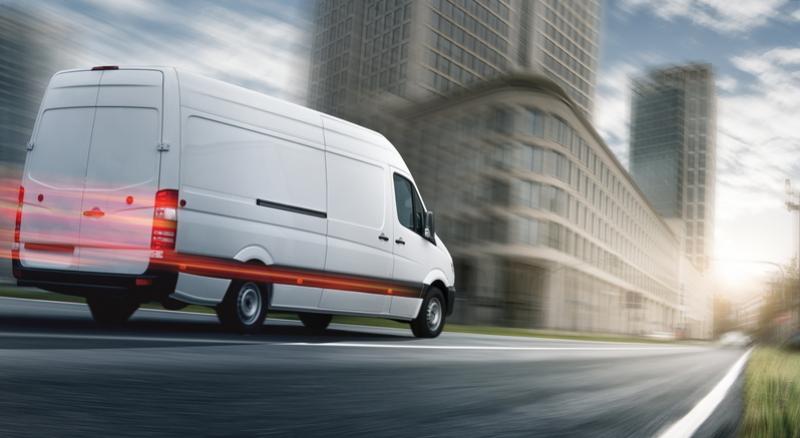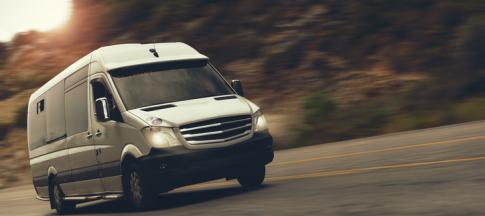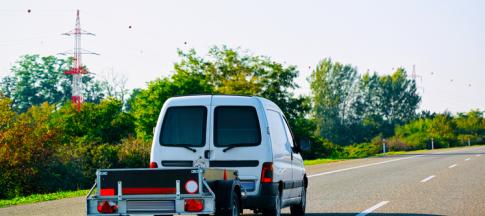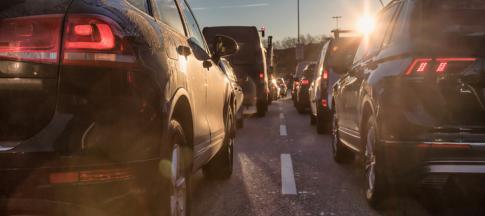
Running a van isn’t cheap.
As with any vehicle, you’ve got to budget for Vehicle Excise Duty (VED or road tax), van insurance, servicing, tyres, repairs and MOTs. And unfortunately, we don’t have much control over most of these costs, but what about fuel?
You might always avoid motorway stations, opting for cheaper supermarkets fuel, but there are a few actions you can do to stretch your full tank further.
Reconsider roof and ladder racks
Vans aren’t very aerodynamic, meaning they use more fuel naturally. However, you can increase their efficiency by keeping the roof clear of unnecessary obstructions.
Granted, it’s not realistic to remove your roof or ladder rack every time it’s not required, but consider which ladders are essential for your every day jobs.
Also, if it’s a few weeks since that job where you’ve needed your pipe carrier, taking it off can improve your fuel efficiency.
Check your tyre pressure
Don’t rely on your van’s tyre pressure monitoring system as it only alerts you if a tyre pressure drops faster than the others. If they’ve all lost 4psi, you’ll be none the wiser.
The National Highway Traffic Safety Administration (NHTSA) found that fuel consumption increases 3% for every 10% tyres are under inflated.
That means a van that usually achieves 30 miles per gallon (mpg) could cost you and extra £52 a year if your tyres are incorrectly inflated to 36psi instead of the recommended 40psi and your annual mileage is 10,000 (assuming a fuel cost of £1.15 per litre).
Reduce your loads
We know your van’s job is to carry loads, but have a look in the back.
Is there a pile of junk, full bin bags, tools you used on a job weeks ago or some leftover building materials shoved into a corner?
All that stuff is costing you money in fuel every time you drive. Have a clear out and you’ll also benefit from all that loadspace you’d forgotten you had! Don’t forget the cab area too.
Don’t fill up to full
Did you know that 70 litres of diesel weigh over 57kg? That’s a third of a person, or a bag of cement.
When possible, run your van with no more than half a tank full to save the extra weight and increase your fuel efficiency.
Switch off your air conditioning
Air conditioning is a life-saver on warm days driving around, but does yours stay on all year round?
It uses a lot of fuel and using it unnecessarily means it’ll need regassing far sooner than it should.
In the cooler months, we recommend only using it when you need it like for demisting windows. And if you do have it on, use the recirculation mode as it’s more effective.
Close your windows
If you rely on opening the cab windows for a breath of fresh air, all the turbulent air means your van no longer moves as cleanly, affecting your fuel consumption.
So whenever possible, and especially when driving fast, keep the windows closed.
Maintain your van
Having a regular service will help keep your van running more efficiently.
Blocked air filter negatively impacts fuel consumption, and sticking brake callipers mean you’re effectively driving with your foot slightly on the brake.
Sometimes, you’ll only realise your engine needs a tune when it fails the smoke test at MOT time. Regular servicing should nip these issues in the bud.
Towing
Make sure to unhitch the trailer between jobs when you don’t need it, otherwise it’ll cost you in fuel.
Plan your journey
Careful route planning can save time as well as fuel.
We recommend using a satnav or app with live traffic information which highlights bottlenecks and delays and suggest the best route to avoid congestion.
Where possible, combine any journeys to save fuel, wear and tear to your van and depreciation.
Driving technique
Driving smoothly can reduce fuel consumption considerably. Below are a few examples:
Keep your foot off the brakes
Brakes creates friction and heat in the discs and drums, and this energy was created by burning fuel. Reading the road ahead and lifting off the accelerator as early as possible will help save fuel.
Avoid harsh acceleration
Ideal change points differ by engine but typically it’s most efficient to change up where maximum torque is developed.
If in doubt, and your van has a rev counter, try around 3000rpm. Revving as high as possible through the gears uses a lot more fuel.
Cruising speed
The faster you drive, the more fuel is used.
It’s a compromise, especially during a working day and you’ll probably want to stay as close to the speed limit as possible.
Driving at 60mph on the motorway is a lot more economical than 70mph though. And, if you’ve got cruise control, use it.
I started my career selling vans in the mid-eighties, progressing through dealer groups to management level. In 2010 I joined vehicle valuation company CAP, being made responsible for forecasting future used values for all makes and models of vans and trucks, this data being used by leasing companies and manufacturers to assess future risk. This role entailed very early exposure to new models including extensive testing across Europe.
In 2016 I started up my own consultancy business dedicated to the LCV industry. In addition, my freelance written work has been used by a number of clients and I am a regular contributor to WhatVan? magazine. I’m also a judge for their annual ‘Van of the Year’ awards.
To relax, I enjoy travel and walking near my Yorkshire home.



